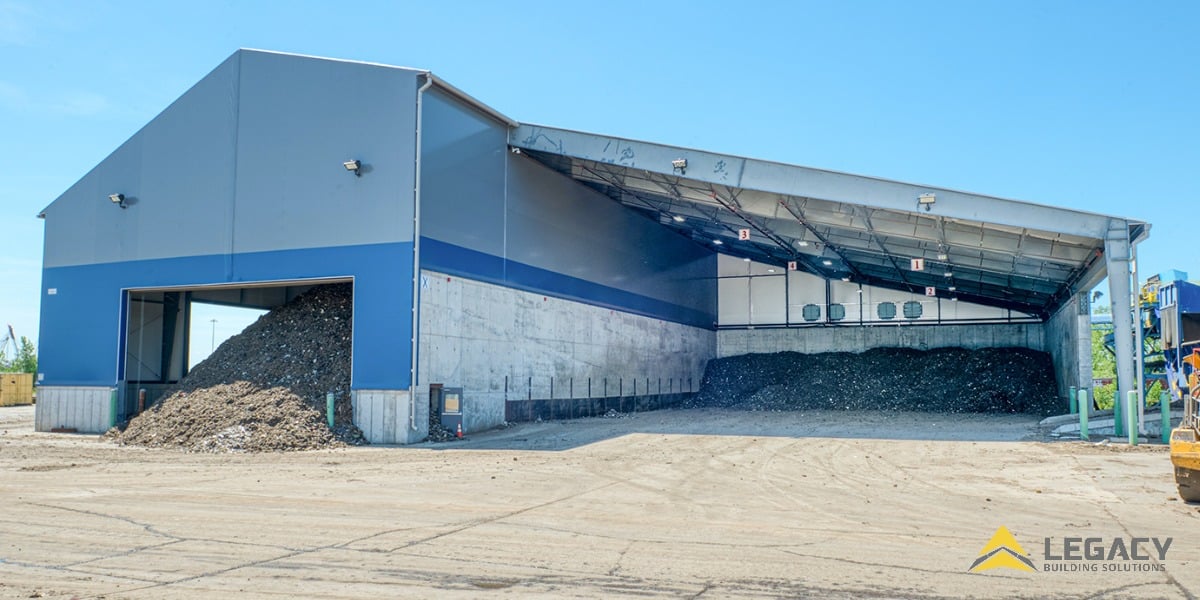5 Mistakes Fabric Building Owners Make

Being successful is usually a matter of making the best decision after careful consideration. But getting to that best decision is a journey that often involves identifying all the wrong choices first…and setting them aside. When you want to make the best decision about buying a fabric building, here are some mistakes you want to avoid.
- Forgetting to ask about tensioning
When you buy a fabric building, they might not tell you about tensioning and retensioning the fabric cladding. In most cases, retensioning or restretching the fabric over the frame, needs to occur a few times over the life of the building. Legacy’s tension fabric structures are different. We use a patented tensioning process that works together with our proprietary Exxotec fabric so retensioning is not needed. That keeps the building looking tight and crisp and beautiful. It does, however, do more than that.
When the fabric cladding is tight and does not move much, even during high wind events, it extends the lifespan of the fabric. In cases where the fabric does move against the frame, there is friction and that friction causes areas of wear. That shortens the life of the exterior cladding. Legacy’s exterior fabric does not have any direct contract with the frame.
- Failing to check local building codes
Some buyers gravitate toward fabric structures because they think the local building codes don’t apply to these buildings. Legacy’s buildings, made with solid steel I-beam frames, are the opposite of temporary. Consequently, we design our structures to abide by all local building codes, both nationally and internationally. Increasingly, building codes are requiring fire suppression systems and our frames are engineered to support those systems (and more).
- Buying off the shelf structures
Friends don’t let friends buy buildings from a catalog. There are a lot of standard prefabricated buildings you can buy in various sizes. But is that what you really need in a building? It’s a building, after all. Legacy builds our structures with the most durable materials so our structures last for decades. That’s why we only offer customized buildings: because owners should get exactly what they need, and want, when purchasing a building that will be around for many years. Don’t adjust your needs to an existing list of structures; let us adjust our buildings to your needs.
- Shopping price instead of budget
If you are just looking at price per square foot, you could be oversimplifying the decision in front of you. Do that with a house, and you will end up with rooms you don’t want, rooms you didn’t get and a location that is totally inappropriate. The same goes for a whole building. We recommend you shop with a budget that takes multiple factors into account. Items on your building budget should include:
- Life cycle costs
- Maintenance costs
- Warrantees
- Insurance costs
- How does the configuration of the building enhance your operation
- Usable space
When you shop with a comprehensive list of budgetary requirements, we are confident our buildings will be an attractive solution.
- Thinking too short term
Fabric structure technology has come a long way, and Legacy has been on the forefront of the advances in terms of fabric, corrosion prevention, engineering, fabrication and installation. The days of fabric buildings with short-term lifespans is, for the most part, over. You can still get fabric buildings that don’t last very long, but you now have options for structures that will stand the test of time. We hope that opens up options and opportunities for our customers who are looking for new ways to think about the buildings in their future.
Avoiding mistakes during the purchase process—especially when it involves something big like a whole building—is important, but it isn’t everything. If you are just beginning to investigate the decisions that are key to buying a fabric structure, you should investigate our Buyer’s Guide: A Journey to a Solution. It will give you a clear idea what’s out there in the fabric building market as well as some of the design decisions you will need to make.
Subscribe to our Blog
Recent Posts
- 5 Factors Every Project Owner Should Consider Before Approving Building Materials
- The 20-Year View: How Material Choices Impact Long-Term Operational Costs
- Climate Resilience in Commercial Construction: Why Traditional Methods May Not Be Enough
- Speed and Quality: The Role of Hybrid Building Materials
- Beyond the Bleachers: Designing Visually Striking Sports Facilities

